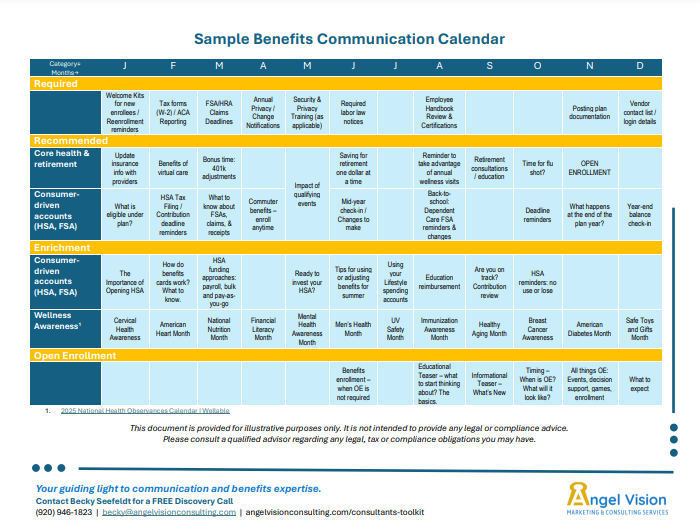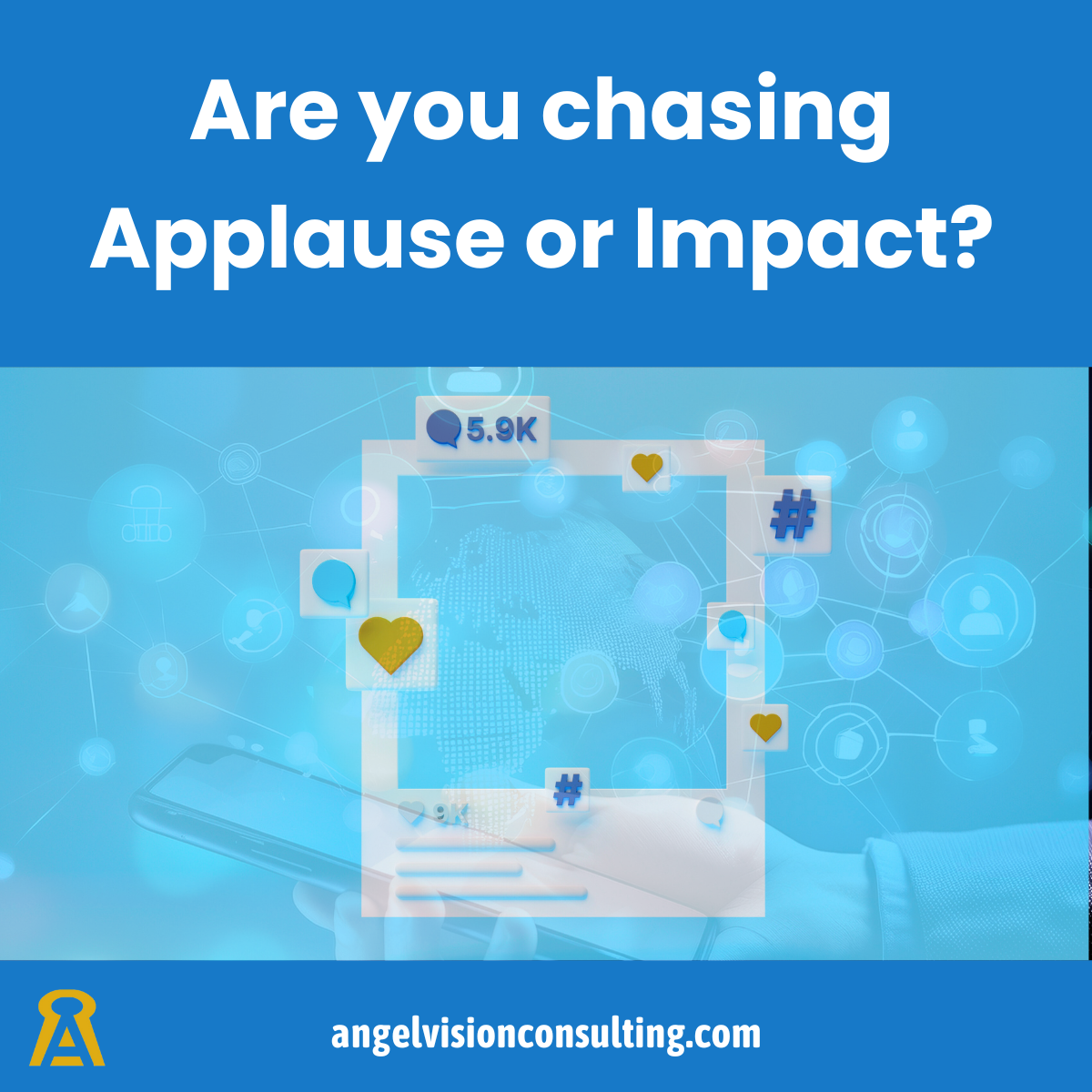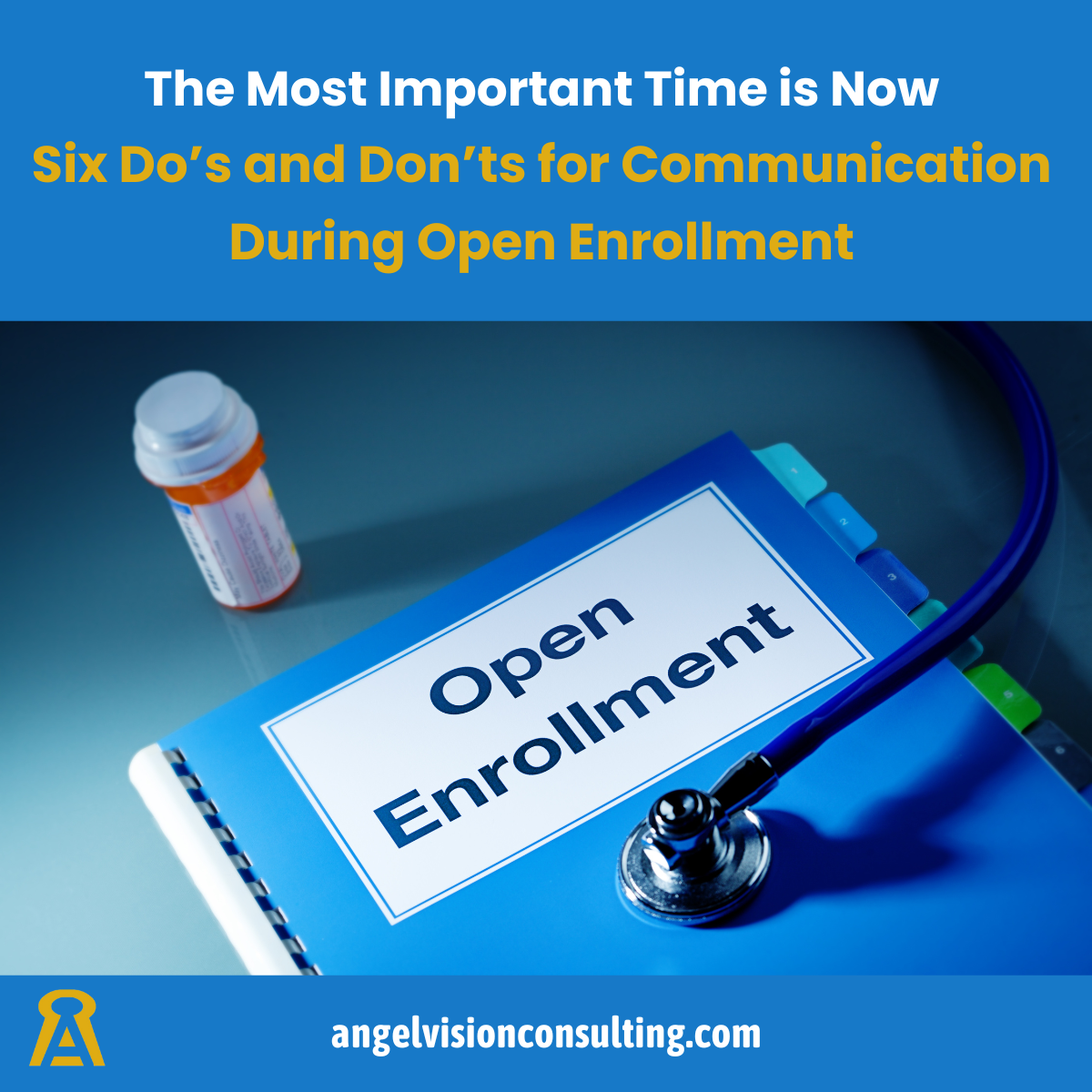5 Tips to a Successful Benefits Communication Strategy
Resources to plan your benefits communication strategy for the year
Throughout our daily lives, we have become accustomed to the sound bites, short-form videos and highly personized messaging. Yet, when it comes to our employer-provided benefits, we often accept a status quo of 100+ page benefits guides, plan documents, clunky user experiences, and confusing language. It is time for a change, and it starts with a plan.
#1. Create a benefits communication calendar.
Benefits communication should not be concentrated to a few months a year. Instead, it should be an ongoing strategy to improve employee's understanding and use of their benefits.
Identify Must-Communicate Topics. Start by identifying compliance requirements, key deadlines, instructions, and important account access and vendor contact information.
Identify Should-Communicate Topics. Consider common questions and topics that might arise throughout the year, such as claims denials, life events, benefit changes, benefit expiration, usage, and enrollment periods.
Identify Enriching Topics. Think about topics that would improve employees' experience and usage of their benefits.

#2. Personalization on a budget.
Many employers lack resources to create sophisticated employee journey maps or offer personalized decision support tools, but that doesn't mean they can't move towards a personalized experience. Consider creating life stage bundles that highlight the types of benefits an employee might consider at certain stages in life. Additionally, once they are enrolled in a particular benefit, the messaging on how they might use that benefit might vary by their life stage.

#3 Look for ways to engage employees.
Avoid lengthy documents and memos when communicating with employees. Instead, consider engaging methods. Here are some potential ideas:
Hold Events: Organize events throughout the year with prizes and fun activities to highlight specific benefits.
Try Gamification: Use low-cost options like Kahoot to introduce competitive quizzes.
Incentivize Participation: Offer monetary or other rewards to encourage engagement.
Corporate Challenges: Consider fitness, savings, or volunteer hour challenges.
Use Multimedia: Incorporate videos or fun gifs to grab attention.
Request Testimonials: Highlight real-life stories from employees about how they use or appreciate their benefits.
Surveys: Use surveys to understand what is working and where improvements can be made.
Incorporate Wellness: Offer fitness classes or meditation sessions to promote wellness in the workplace.
#4 Build out your messages.
When communicating with employees, it can be easy to fall into common pitfalls.
For further insights, check out Becky Seefeldt's recent article in Forbes: Five Pitfalls to Avoid in Employee Communication and Five Strategies to Try Instead.
#5. Put your plan into action.
There is a saying, "Perfection is the enemy of progress." There is no perfect plan or perfect communication, but there is an opportunity to try something new, see what works and refine your approach. Get ready to communicate all year long.
This article was originally written for Angel Wisdom Newsletter. Subscribe of LinkedIn.


